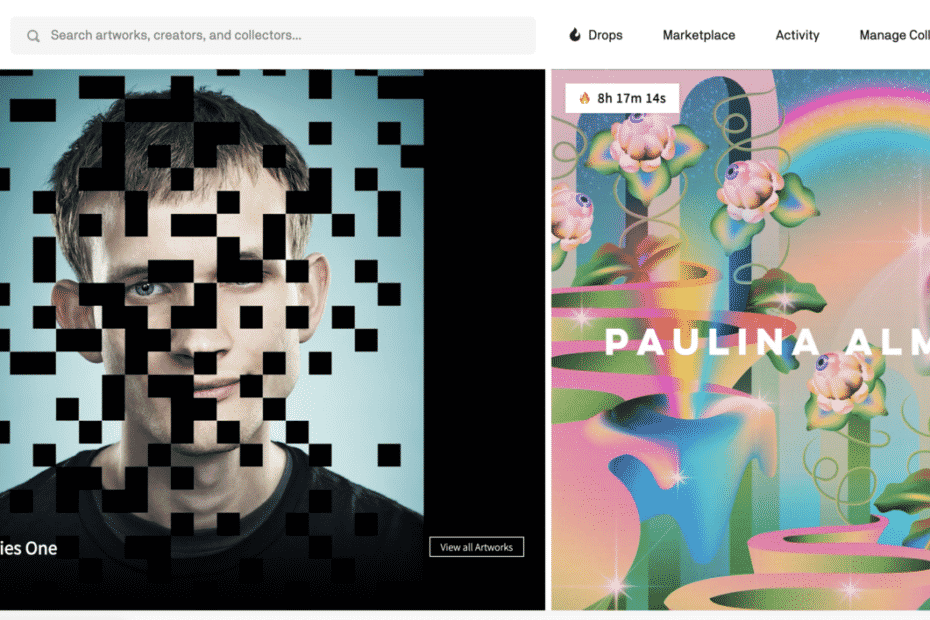In this interview with Makersplace, Head of Music and Business Development, David Weier, explains in simple terms what an NFT marketplace is and how you can make and collect NFTs.
Jonas Kasper Jensen (JKJ): What is Makersplace, and how was Makersplace conceived?
David Weier (DW): MakersPlace is a primary and secondary market for fine art NFTs. It is a curated platform, and most of the artists were invited or referred to make stores. We present works by, for instance, Matt Gondek, Anna Zhilyaeva, Urs Fischer, Alan Bolton, and Yiying Lu. We also brought Beeple’s EVERYDAYS: The First 5000 Days to market. The company was created by founding employees of Pinterest, which can be seen a bit in MakersPlace’s design and interface.
JKJ: Could you please explain what an NFT marketplace is?
DW: We are essentially an art gallery, not different from a physical storefront in function. Artists upload or ‘mint’ their creations and put them on sale by auction or listing and soliciting offers. When an artwork is purchased, the token ownership is transferred from the creator to the buyer. The buyer may decide to resell the artwork, and if they do, the creator gets a 10% royalty of future sales.
JKJ: In simple steps, how can you buy an artwork on Makersplace?
DW: Very simply, just sign up as a new collector with a username, password, and email address. Then, begin looking at the galleries of artists and other collectors. Follow a few artists whose work you like, and we’ll refer to similar works. When you are ready to buy, sign in with PayPal and use a credit card. Maybe in the future, you’ll decide to try cryptocurrency and make a purchase in Ethereum. In most cases, it’s as easy as making an offer directly to the artist who’ll either accept or decline. In the case of auctions, it’s very exciting to watch the bids arrive and decide if you want to join the action.
JKJ: It is uncertain to many people what they own when they buy an NFT. Can you explain what exactly collectors buy when they buy an NFT on Makersplace?
DW: When you buy an NFT, you typically buy the image and the artistic composition. It could be a 2D painting, a 3D or VR image, sometimes with sound, or even an entire song. Occasionally it may come with a physical version like a signed lithograph, a toy, or another collectable. Sometimes an opportunity to meet or interact with the artist. It’s important to know that you aren’t buying all the rights to an artwork like the ability to sell copies, use in advertising, or commercial use. Once you own it, you are allowed to download a high-resolution print for display in the real world. It’s also possible to export your new artwork to the metaverse like a video game or virtual gallery other than MakersPlace. Of course, you may decide to sell it and perhaps make some money on the resale. Art is an investment, after all.
JLJ: What about the artist? What is an NFT artist, and how do artists use an NFT marketplace like Makersplace?
DW: Most NFT artists create their work digitally using digital drawing, painting, design, and 3D CAD software. Some use tablets or iPads. Others use complex CAD software. I mentioned Anna Zhilyaeva earlier; she paints herself inside a VR canvas. Her painting is actually performance art choreographed to music while creating the final piece. Many photographers, videographers, film directors, sculptors, and musicians adapt what they do to create NFTs. Matt Gondek, for instance, will create a sculpture, paint a version on canvas, then render a 3D digital model as an NFT. I attended a gallery opening called Rats, and he unveiled all three versions of his exploding decomposition of a mouse.
JKJ: How do you know if an NFT is genuine?
DW: The Ethereum blockchain is really a public database that describes the aspects of the original creation. Whenever an NFT is sold or gifted, the blockchain ownership is transcribed, and the price of the sale is conveyed at that time.
JKJ: Why are so many artists in the NFT art movement anonymous?
DW: Why do so many musicians or actors use names other than their birth names? It’s part of their creative process or branding of a concept. They are often illustrators, graphic designers, or animators in their day jobs. Their alias gives them another persona consistent with a different vision.
JKJ: Do you expect the works of art sold on Makersplace to stand the test of time and also be appreciated as artworks ten or a hundred years from now?
DW: Like any new artform, it takes time for widespread recognition and appreciation. Graffiti was looked at as defacing property in the early ’70s before Basquiat, Haring, and now Banksy. Some view environmental art like the orange flags Christo installed in Central Park or now on the Arc de Triomphe as curiosities, but step back to reveal the full beauty.
Image from Makersplace
Read more: MetaMundo Raises $2.7M to Launch the First 3D NFT Marketplace for Building the Metaverse



Pingback: History of Crypto Art - NFT
Pingback: NFT and blockchain explained - what you need to know as a newcomer - NFT
Pingback: Crypto Art Museums and the future of art collections - NFT
Pingback: iMining Technologies Launches Concierge Service to Assist in NFT and Metaverse Digital Asset Purchases - NFT
Pingback: How to get started as an NFT artist - NFT
Pingback: NFT Platform MakersPlace Announces Latest Collection of Urs Fischer's CHAOS Series - NFT